In pictures: Building Cheddar Reservoir in the 1930s
- Published
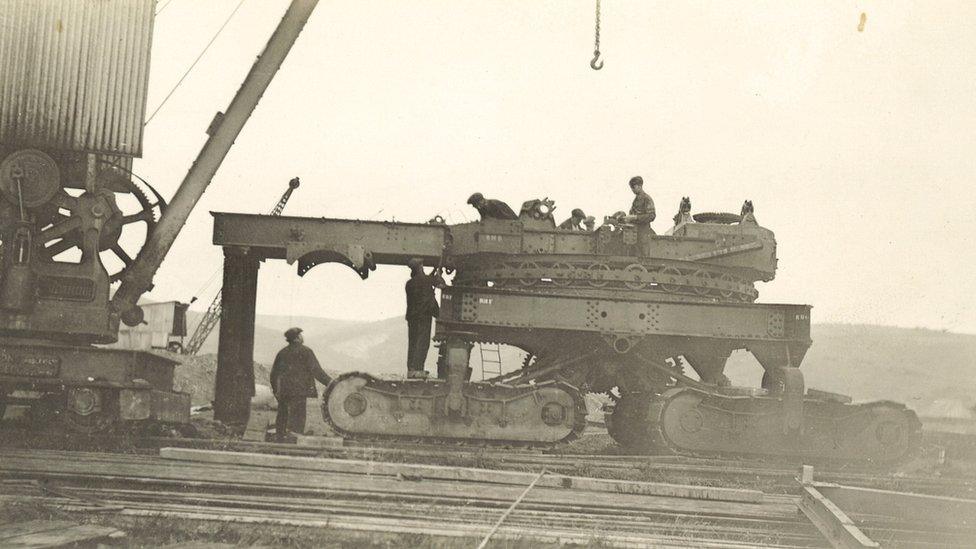
Bristol Water wants to build a new £100m reservoir in Cheddar, Somerset. Cheddar Reservoir Two would be located not far from the existing Cheddar Reservoir. New images of the original reservoir's 1930s construction have recently emerged, including this one which shows men at work on a large piece of machinery.

Bristol Water said Cheddar had been a key part of it's supply "grid" for nearly 100 years. In 1914, it was decided to take water from the village to increase supplies to Bristol. In early 1922 the dams and intake in Cheddar Gorge, next to the Cliff Hotel, were built and a pipeline laid to a pumping station in Lower New Road.
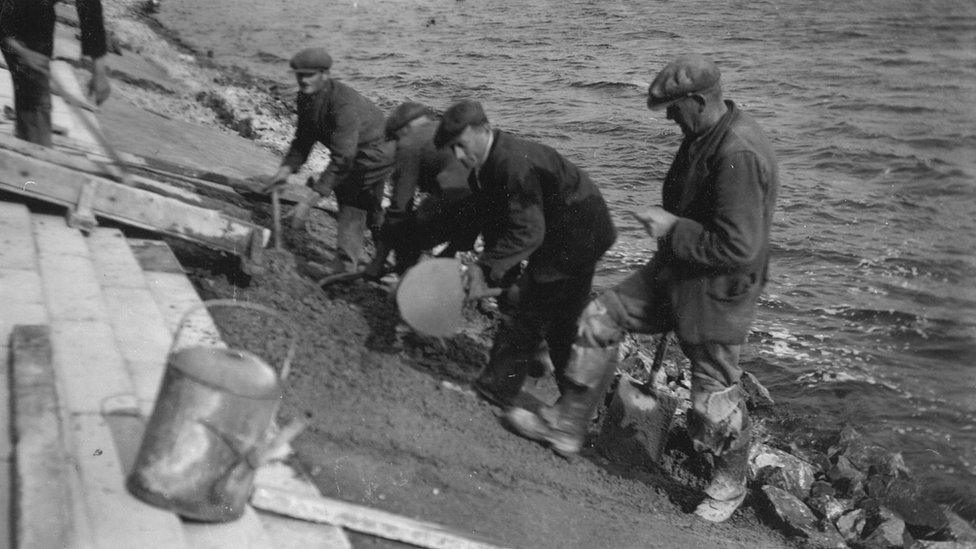
Eventually, Bristol Water decided that a reservoir was needed to make better use of water from the springs. Work began on Cheddar Reservoir in April 1933, with an estimated total cost of £450,000. The company actually wanted to build a much larger reservoir, or a second one as well, but funds did not allow.
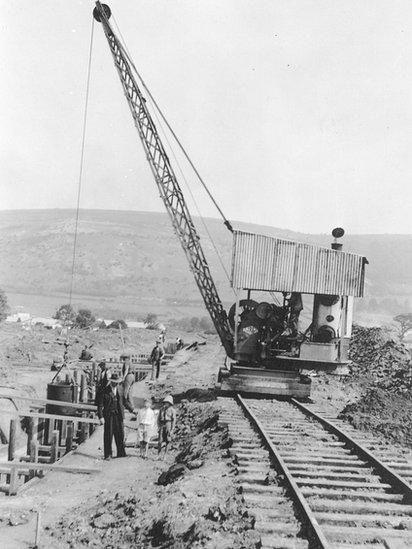
Work was suspended on the project from October 1935 to March 1936 due to incessant rain. The first water was supplied for treatment by the new reservoir in 1938, although there is no record of an official opening. It is known that it took several years to fill - it has a capacity of 6 million cubic meters (1,350 million gallons).
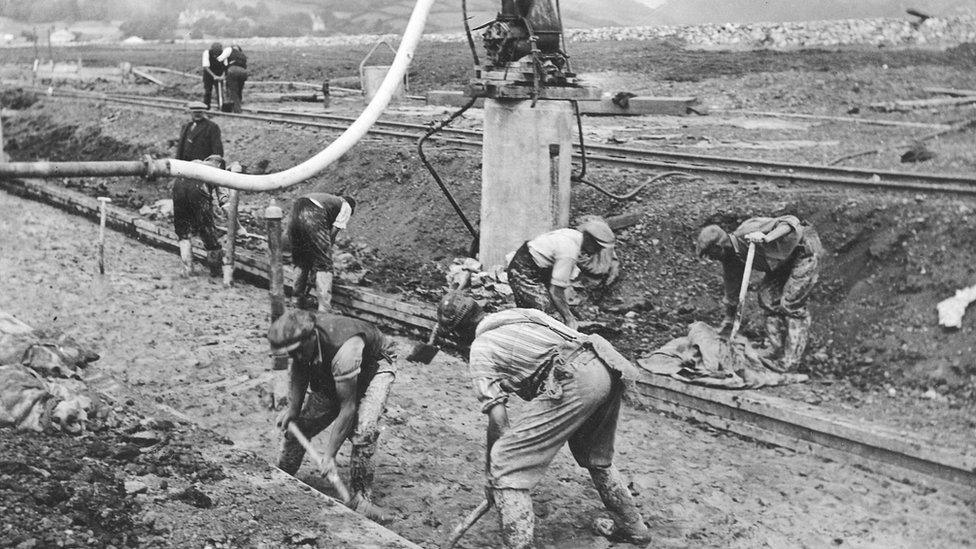
Over 400 men were employed on the site, with wooden huts provided for accommodation near the tower on the Axbridge side. Bristol Water said many of the so-called navvies were Irish Catholics, so they even had their own priest.
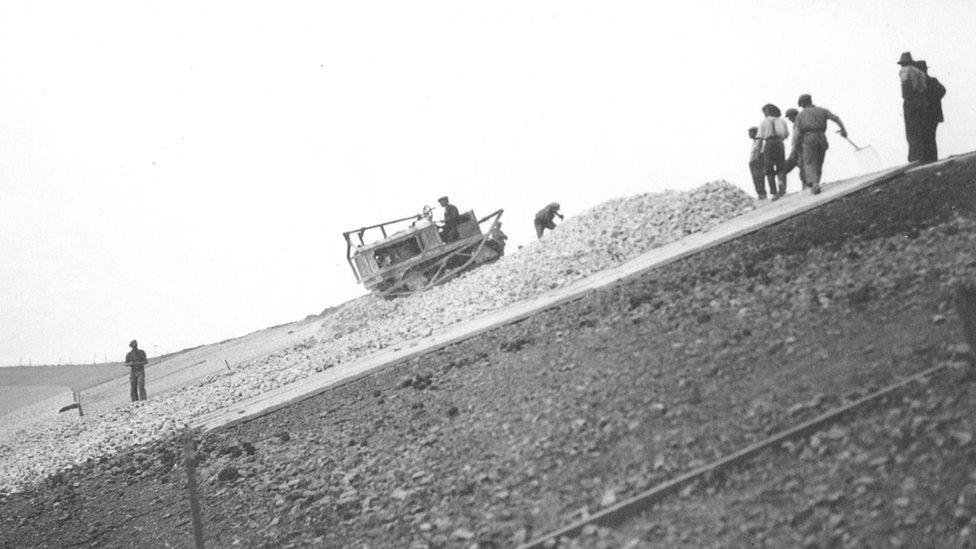
Raw manpower, horses, steam shovels and cranes were all used to build the reservoir and there was little regard for health and safety. A branch of the Axbridge to Cheddar railway was built across the fields behind the sailing club to bring in materials.
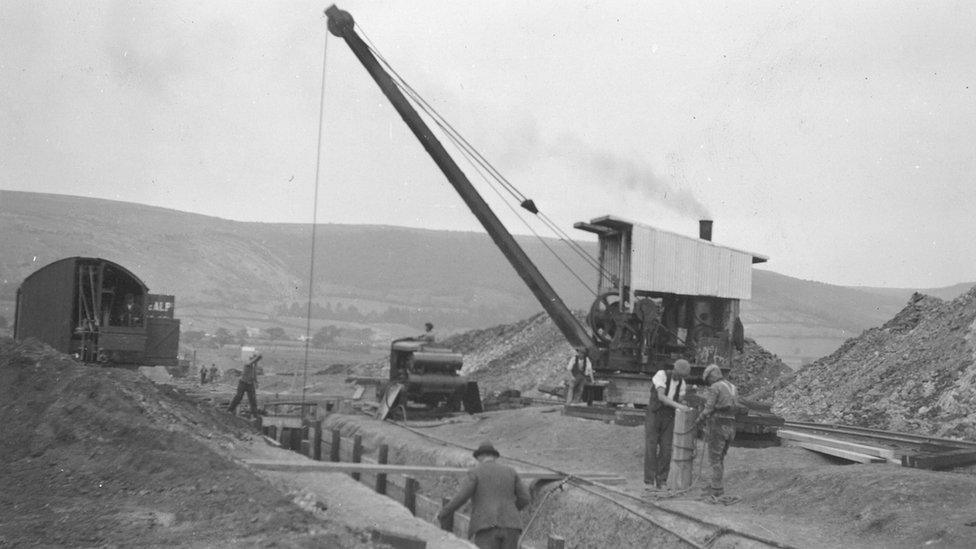
Bits of the machinery used in construction are buried around the reservoir including, some believe, a complete railway engine near the playing fields. An eight-week programme of archaeological investigations by Wessex Archaeology is currently underway.
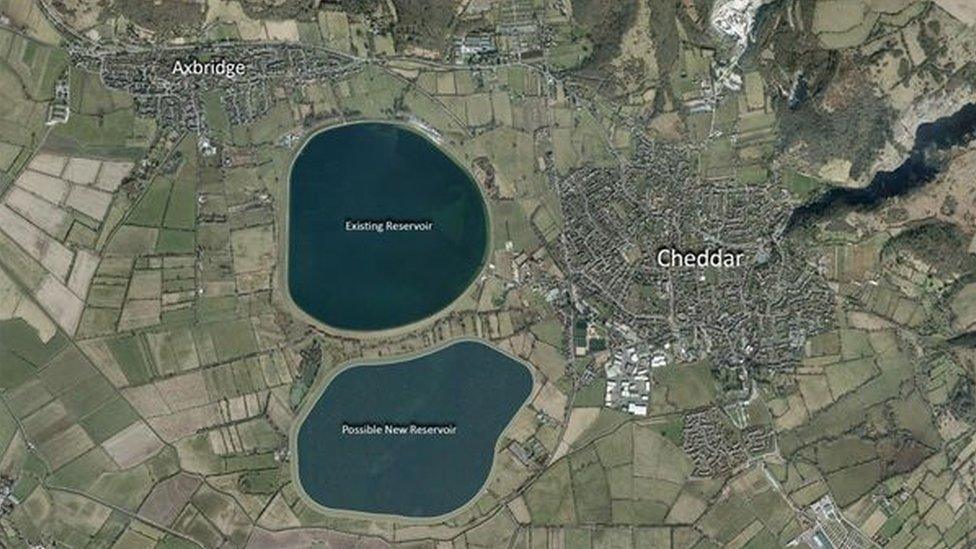
Bristol Water said the new reservoir would help meet the future need for water across its supply area. Today, Bristol Water supplies a 2,400 square kilometre area stretching from Tetbury, Gloucestershire, in the north, to Burnham in the south and east to Wells and Shepton.
- Published16 June 2013
- Published3 June 2013
- Published7 April 2013
- Published13 November 2012
- Published8 October 2012
- Published9 January 2012
- Published8 January 2013